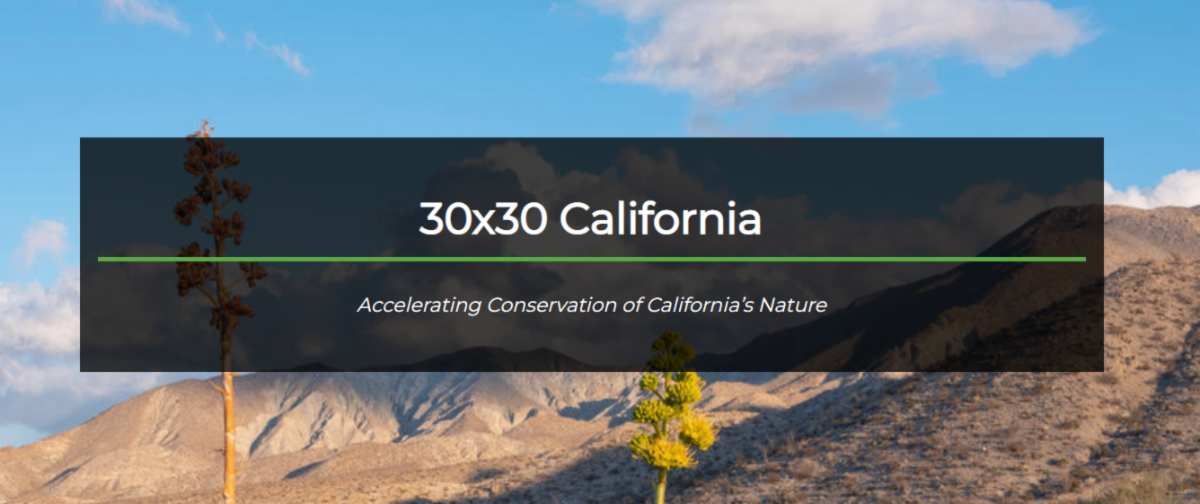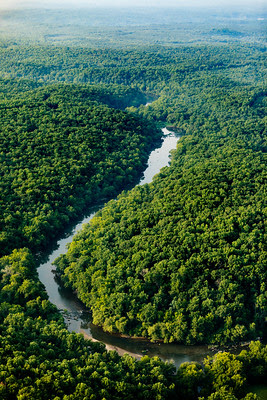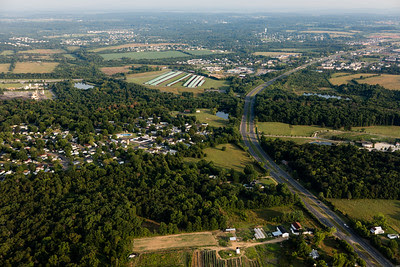Fauquier County, VA
(Photo Credit: Chesapeake Bay Program)
Written by: Warren Brown
Biodiversity is the spice of life. In fact, it may be a key ingredient essential to our human existence. As an existential element, sustaining biodiversity should be on everyone’s radar, something we can all agree to support collectively as an important part of our landscape-scale efforts.
In 1992, the United Nations Earth Summit in Rio de Janeiro drafted an international treaty on biodiversity. This treaty has been ratified by 195 nations and the European Union. The United States and the Vatican are the only national entities that have not ratified the treaty. Although the US has signed the convention, ratification of the treaty has been blocked by congressional opposition to perceived impacts on extractive industries and intrusions on national prerogatives.
The convention on biological diversity is widely recognized as the most energetic response to the scientific community’s work to document threats to species from loss of natural habitat. Influential advocates for action to protect biodiversity recognize that the earth faces a threat of mass extinction due to human activities, and suggest that species are being lost at a rate nearly 1,000 times higher than during the pre-human era. The good news is that there is still time to save up to 85% of Earth’s biodiversity and some rather provocatively have proposed that half of the planet be set aside from human development. This idea was distilled into a slogan of “50 by 50” to describe the goal of saving half of the planet by 2050. The idea has evolved to include an interim goal of preserving 30% of the planet by 2030 (dubbed “30 by 30” or 30×30) and it was adopted by the current administration as a cornerstone of programs to mitigate impacts of climate change.

30×30 CA
(Photo Credit: California Nature)
California Dreaming
California has adopted an especially enthusiastic program to achieve the 30 by 30 conservation goal. The Chesapeake Conservation Partnership’s upcoming 13th Annual Meeting, November 9-10, will explore California’s plan and lessons learned and use it to spark ideas for collective action and enhanced future collaboration here in the Chesapeake.
In 2022, California recorded about 24 million acres or 23% of its land as protected and 16% of its coastal marine area as protected. California’s strategy to conserve an additional six million acres of land and half a million acres of coastal waters is organized into ten Pathways:
- Accelerate Regionally Led Conservation
- Execute Strategic Land Acquisitions
- Increase Voluntary Conservation Easements
- Enhance Conservation of Existing Public Lands and Coastal Waters
- Institutionalize Advance Mitigation
- Expand and Accelerate Environmental Restoration and Stewardship
- Strengthen Coordination Among Governments
- Align Investments to Maximize Conservation Benefits
- Advance and Promote Complementary Conservation Measures
- Evaluate Conservation Outcomes and Adaptively Manage
The program emphasizes the need for collaborative partnerships and voluntary efforts from land managers, community conservationists, scientists, environmental stewards, California Native American tribes and all Californians who enjoy the state’s unique natural resources.
Public Engagement
This strategy was formed by the collective wisdom of thousands of Californians who are ready to work together to achieve 30×30. This insight and direction were provided through nine regional workshops, five topical advisory panels, consultations and meetings with over 70 California Native American tribes and dozens of meetings with myriad community organizations, coalitions and interest groups.
- As a result of this thorough process to involve the state’s residents, California’s 30 by 30 strategy recognizes three interrelated goals, with priorities outlined for each goal as follows:
- Protect and Restore Biodiversity:
- Ensure conservation of habitats that represent the full diversity of California’s ecosystems, especially rare or remnant habitat types.
- Protect areas that are adjacent or linked to existing conserved areas to support large, interconnected watersheds and seascapes.
- Restore degraded habitats, especially for rare ecosystems and wetlands.
- Target areas for conservation with high species richness, endemism (species only found in one place), and species rarity.
- Prioritize places that support exceptional biocultural significance, which account for the interconnected nature of people and places.
- Ensure conservation and restoration of river corridors that are essential to fish and wildlife movement and that serve as climate refugia for native species.
- Expand Access to Nature:
- Provide for a wide variety of outdoor recreation experiences across conserved areas.
- Protect California Native American tribal ancestral lands for cultural practice, ceremony, tribal management, and subsistence hunting and harvesting.
- Protect and restore natural areas and connections within and near urban and rural communities that have barriers to access to nature.
- Increase access points and trails within existing natural areas, including coastal areas and urban rivers.
- Incorporate programming, education, outreach, and engagement that is accessible and representative of California’s cultural diversity.
- Mitigate and Build Resilience to Climate Change:
- Conserve and manage lands and coastal waters to remove and store carbon dioxide from the atmosphere, consistent with the Natural and Working Lands Climate Smart Strategy and Scoping Plan.
- Conserve land and coastal waters that buffer climate impacts and build resilience to protect climate-vulnerable communities and ecosystems.
- Establish and conserve places that will persist under future climate conditions, serve as refugia for plants and animals and accommodate habitat range shifts.
- Improve habitat connectivity and other actions that build the resilience of species and habitats by facilitating plant and animal migration and gene flow.
California’s 30 by 30 program recognizes that designating an area as conserved is only the beginning of effective conservation. Protected areas require ongoing stewardship and monitoring. Sufficient funding and personnel are needed to ensure conservation objectives are met. The 30 by 30 initiative provides a pivotal opportunity to improve current restoration practices and strengthen long-term stewardship to ensure effective conservation into the future.
Many of these principles are reflected in our ongoing work to protect and restore the Chesapeake Bay, but we can find inspiration and ideas by learning about examples from states beyond our watershed. California is just an example; some others worth exploring include:
- The Regional Conservation Partnership Network (see the Highstead Foundation’s Recent Report: New England’s Climate Imperative: Our Forests as a Natural Climate Solution);
- New England’s Wildlands, Woodlands, Farmlands and Communities (check out their state progress dashboards);
- The Appalachian Trail Conservancy.

Rappahannock River
(Photo Credit: Chesapeake Bay Program)
The Chesapeake Conservation Partnership’s upcoming 13th Annual Meeting November 9-10 is being held at the National Conservation Training Center in Shepherdstown, WV.
After a three-year hiatus on in-person meetings, CCP partners are looking forward to robust discussion and getting reconnected. For those not attending, the main presentations will be recorded and made available after the meeting, including: (1) keynote speaker on the CA 30×30 plan, Jennifer Norris, deputy secretary for biodiversity and habitat, CA Natural Resources Agency; (2) Brad Rogers, executive director of the South Baltimore Gateway Partnership, presenting the Reimagine the Middle Branch project; and (3) Phil Wenger, CEO of the Lancaster Conservancy, on multiple acquisitions that led to the new Susquehanna Riverland State Park.
Image credit:
- CA Viewer – Center for Conservation and Innovation
Lightning Update is a regular communication of the Chesapeake Conservation Partnership. Any opinions expressed are those of the authors and do not necessarily reflect positions of the Partnership or member organizations.
To share a success story, news, or important event, send your information to:
Support for the Chesapeake Conservation Partnership is provided by:
National Park Service Chesapeake
EPA Chesapeake Bay Program
USDA Forest Service
Pennsylvania Department of Conservation & Natural Resources
Maryland Department of Natural Resources
Virginia Outdoors Foundation
US Fish & Wildlife Service
Chesapeake Conservancy
The Chesapeake Conservation Partnership is co-convened by:




